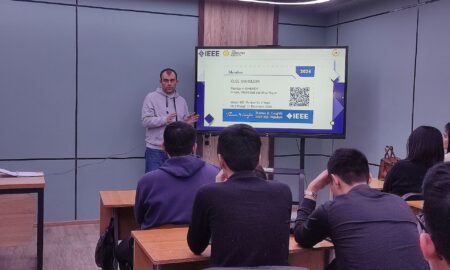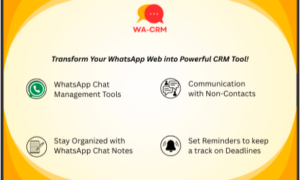Posts By Angela Scott-Briggs
-

 228Cryptocurrency
228CryptocurrencyMastering Crypto Advertising in a Dynamic Market
The crypto world is evolving rapidly, and so is how brands market themselves. Crypto advertising is no longer a niche tactic. It’s...
-

 200Gadgets
200GadgetsMeet the Wurkkos HD03 RGB Clip‑Light – Compact 680 LM Pocket Powerhouse
If you thought that your pockets were full enough, you can now make room for one more valuable item to add to...
-

 178Interviews and Reviews
178Interviews and ReviewsBuilding High-Performing Tech Teams: Interview with Mykhailo Kopyl, Founder & CEO of Seedium
In this interview with TechBullion, Mykhailo Kopyl, founder and CEO of Seedium, a web & mobile development company that has built over...
-

 113Business news
113Business newsWhy Furniture Brands Are Skipping Photoshoots and Going Digital
There’s a quiet shift happening in how furniture brands work with visuals. Not long ago, a new collection meant packing up sofas,...
-

 236Artificial intelligence
236Artificial intelligenceWhat Are AI Co-Pilots in Social Media Management—and How Do They Work? Insights by Amplysphere OÜ
The landscape of social media management is shifting rapidly. What used to be a manual, time-consuming process now involves advanced automation and...
-

 418Technology
418TechnologyTech-Enabled Shipping: How Advanced Tracking Is Transforming Customer Experience and Operational Efficiency
In today’s fast-paced economy, speed, transparency and reliability in shipping are no longer optional — they’re expected. Advanced tracking technologies — driven...
-

 2.9KBusiness Reviews
2.9KBusiness ReviewsHow To Start A Content Marketing Business: A Business You Can Manage From Anywhere, Anytime
Launching a content marketing business that thrives on author bylines in high-authority media offers a compelling path to influence and remote profitability....
-

 567Blockchain
567BlockchainBlockchain Government Regulation: Lessons from DOGE
The third edition of the London Blockchain in Government Summit delivered a compelling blend of real-world case studies and forward-thinking policy discussions,...
-

 423Business news
423Business newsHow to Use Content Marketing Strategy to Attract More Clients
Content marketing has evolved from a supplementary tactic to a core pillar of customer acquisition in the modern digital marketplace. High-quality, expert-authored...
-

 371Artificial intelligence
371Artificial intelligenceBusinesses Seek To Automate White Collar Work
Businesses up and down the country are looking to automate some elements of white collar work. While the AI singularity isn’t quite...
-

 507Gadgets
507GadgetsDIY Meets High-Tech: How HSFTOOLS Makes Thermal Imaging Easy for First-Time Users
HSFTOOLS is launching its largest discount campaign of the year in time for Prime Day, offering up to 32% off across its...
-

 1.0KBusiness news
1.0KBusiness newsInvisible, Reliable, Award-Winning: How Oleg Mikhelson Quietly Reinvented E-Commerce Infrastructure
In the world of digital commerce, infrastructure rarely makes headlines – until it fails. But what if failure simply doesn’t happen? That’s...
-

 3.2KBig Data
3.2KBig DataRahman Shittu: The Data Science Powerhouse Redefining Innovation in the US and Beyond
Few figures have emerged with the force, vision, and technical brilliance of Rahman Akorede Shittu in a world racing toward a digital-first...
-

 800RegTech
800RegTechSibongile Gobile: The Legal Visionary Redefining South Africa’s Tech Frontier
In the heart of South Africa’s dynamic tech revolution stands an unlikely figure who is challenging conventions and redefining what it means...
-

 1.1KPropTech
1.1KPropTechHow Digital Twins Are Transforming Commercial Real Estate in Toronto
Toronto’s commercial real estate market is at a pivotal moment. Buildings once bustling with office workers now sit partially empty. Tenants are...
-

 900How To
900How ToBuilding Your Dream Home: Location, Design & Lifestyle Considerations
There’s something uniquely satisfying about envisioning your dream home, a space designed entirely around your preferences and lifestyle. But in today’s fast-moving...
-

 873Artificial intelligence
873Artificial intelligenceSuper Intelligence: Meet Deepinvent AI Engine Compressing Years of R&D into Minutes.
Companies are always seeking the fastest ways to streamline innovation and progress by inventing the latest technologies for multiple industries, ranging from...
-

 888Fintech News
888Fintech NewsFintech Data Infrastructure Requirements in the Era of AI and Clouds
With the rapid adoption of AI functions in financial applications, scalability, high speed and reliable data storage are critical. Stanislav Lukianov, currently...
-

 380Business news
380Business newsLev Mazaraki: Why the future of remote work is visual
My name is Lev Mazaraki. I’ve been traveling the world all my life, trying to capture the spirit of different cultures and...













